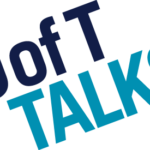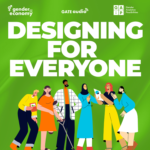Our cognitive biases play a role in ongoing inequality, but it’s also woven into our systems in ways we’re still disentangling.
In this video from Research2Reality, Sarah Kaplan talks about why it is important to innovate to achieve gender equality.
From the Research2Reality webpage: “Sarah Kaplan was raised in the ’70s and ’80s, at the height of the women’s liberation movement. She grew up being told that women could be anything they wanted to be, and so she began her career believing that the world would be her oyster. But three decades have passed and very little has changed for gender equality, says Kaplan.
She is now the Director of the Institute of Gender and Economy at Rotman (University of Toronto), and she studies the nature of our deeply rooted gender biases.
“The most difficult innovation challenge we have in society right now is gender equality, because we’ve thrown a lot of stuff at it and we haven’t been able to fix it,” says Kaplan.
“So what’s really interesting is a lot of people think that our challenge with gender equality just had to do with that we have biases in our brains, and so if we can only fix our brains, we would somehow fix the problem.”
Unfortunately, the problems go beyond psychological barriers, extending into the institutions that influence how people behave. Real change takes more than flipping a switch in our minds because we also need to change the foundations of the society that perpetuates the divide.
“The challenge is that those biases, those norms that we have, really are embedded in all of our institutions: in how we think about who’s promotable to leadership, about how we think about who would be a good entrepreneur, about how we think about what kinds of products would be interesting for the marketplace, or services,” adds Kaplan.
“And so the solution is going to be changing those organizational and systemic structures that actually shape all the behaviours that we have.”
The possibilities in a future with true gender equality are hard to imagine because today’s world is so far from being inclusive.
“By being more representative, by having the people in our society represented at the tables that make decisions, whether it’s entrepreneurial decisions, corporate decisions, policymaking decisions, we’re going to uncover opportunities, and we can’t even imagine what they are because we’ve never been inclusive,” says Kaplan.
To make progress, an objective lens is needed to quantify the gap. Kaplan is looking for strategic and innovative ways to think about gender, and so she is developing gender analytics to help frame inequalities so they can be addressed.
“We need to actually help companies, our MBA students, policymakers, think about how to do analytics with a gender lens, whether it’s policy problems, business problems, or social problems,” says Kaplan.
“Otherwise it’s going to be another 30 years, and the next generation is going to wake up and say that same thing, and I can’t let that happen.”
For the full post, please see here.




